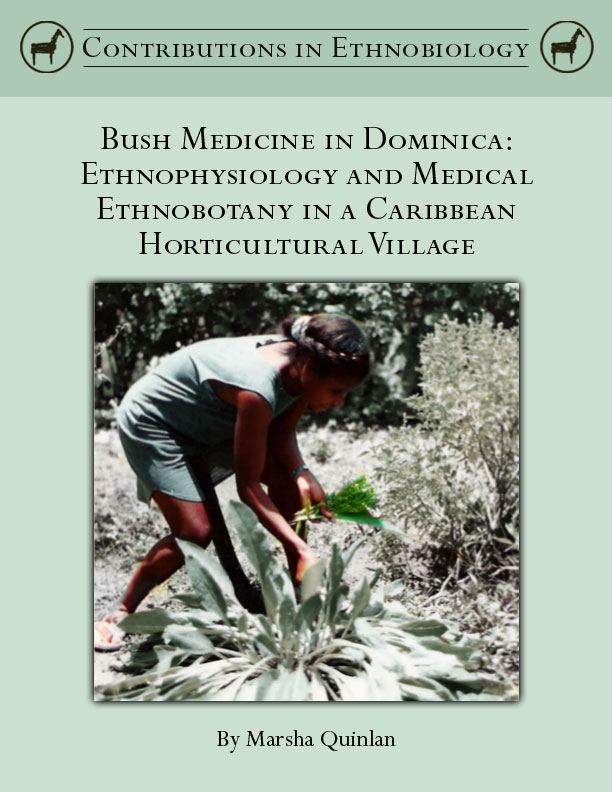Bush Medicine in Dominica: Ethnophysiology and Medical Ethnobotany in a Caribbean Horticultural Village, by Marsha B. Quinlan and Katherine E. Flores

Abstract: When illness strikes, rural Dominicans typically self-treat using the theories and herbal remedies of the ethnomedical system they call "bush medicine." This mixed-methods ethnography and ethnobotanical monograph has five aims: (1) It provides a case study of bush medicine as a Caribbean knowledge system about health and the body. (2) It discusses the bush medicines—medicinal plants—that Dominicans use for their common illnesses and describes why locals consider them efficacious. (3) It illustrates how Dominicans' notions of body functions map on to the plants that they use in their common treatments; (4) It examines existing pharmacological literature relevant to Dominican medicinal plants. And, (5) it illustrates the utility of formal ethnographic field methods for identifying patterns of plant use. Qualities of salient herbal remedies coincide with local ethnophysiology of the illnesses they treat.
Contents
- PART I: BUSH MEDICINE’S CULTURAL CONTEXT AND CONTENT
- Chapter 1: Introduction and Setting: Bush Medicine in Bwa Mawego
- Chapter 2: Methods
- Chapter 3: General Ethnophysiology
- PART II: ILLNESSES AND THEIR BUSH MEDICINES
- Chapter 4: Head Cold and Cough
- Chapter 6: Asthma
- Chapter 7: Something Hurt You
- Chapter 8: Fright
- Chapter 9: Rheumatism
- Chapter 10: Headache
- Chapter 11: Fever
- Chapter 12: Sore Throat
- Chapter 13: Inflammation
- Chapter 14: Pressure
- Chapter 15: Buttons and Prickle Heat
- Chapter 16: Boils
- Chapter 17: Sprains
- Chapter 18: Cuts and Sores
- Chapter 19: Worms
- Chapter 20: Loose Bowel and Diarrhea
- Chapter 21: Vomiting and Upset Stomach
- Chapter 22: Conclusions
- Appendix A: Table of Taxa by Illness
- Appendix B: Table of Taxa by Species
- Appendix C: Table of Taxa by Family
